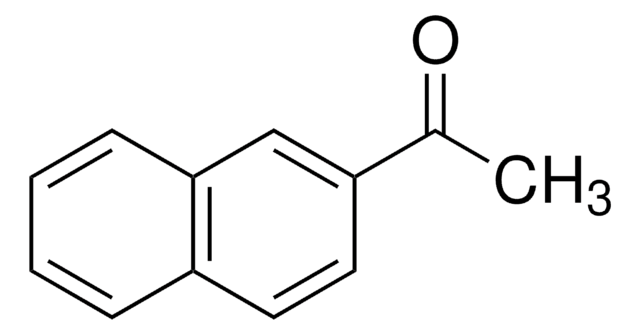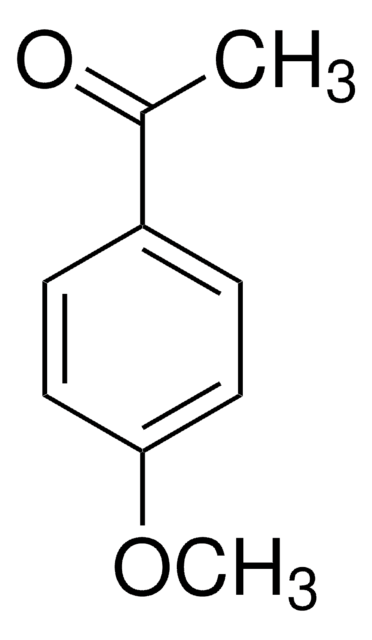W272302
Methyl β-naphthyl ketone
≥99%, FCC, FG
Sinónimos:
2-Acetonaphthone, 2′-Acetonaphthone, 2-Acetylnaphthalene, Methyl 2-naphthyl ketone
About This Item
Productos recomendados
biological source
synthetic
Quality Level
grade
FG
Kosher
agency
meets purity specifications of JECFA
reg. compliance
EU Regulation 1334/2008 & 872/2012
FCC
FDA 21 CFR 172.515
assay
≥99%
bp
300-301 °C (lit.)
mp
52-56 °C (lit.)
application(s)
flavors and fragrances
documentation
see Safety & Documentation for available documents
food allergen
no known allergens
organoleptic
orange; floral; sweet
SMILES string
CC(=O)c1ccc2ccccc2c1
InChI
1S/C12H10O/c1-9(13)11-7-6-10-4-2-3-5-12(10)8-11/h2-8H,1H3
InChI key
XSAYZAUNJMRRIR-UHFFFAOYSA-N
¿Está buscando productos similares? Visita Guía de comparación de productos
Categorías relacionadas
General description
hcodes
pcodes
Hazard Classifications
Aquatic Chronic 2
Storage Class
11 - Combustible Solids
wgk_germany
WGK 2
flash_point_f
334.4 °F - DIN 51758
flash_point_c
168 °C - DIN 51758
ppe
dust mask type N95 (US), Eyeshields, Gloves
Certificados de análisis (COA)
Busque Certificados de análisis (COA) introduciendo el número de lote del producto. Los números de lote se encuentran en la etiqueta del producto después de las palabras «Lot» o «Batch»
¿Ya tiene este producto?
Encuentre la documentación para los productos que ha comprado recientemente en la Biblioteca de documentos.
Nuestro equipo de científicos tiene experiencia en todas las áreas de investigación: Ciencias de la vida, Ciencia de los materiales, Síntesis química, Cromatografía, Analítica y muchas otras.
Póngase en contacto con el Servicio técnico






